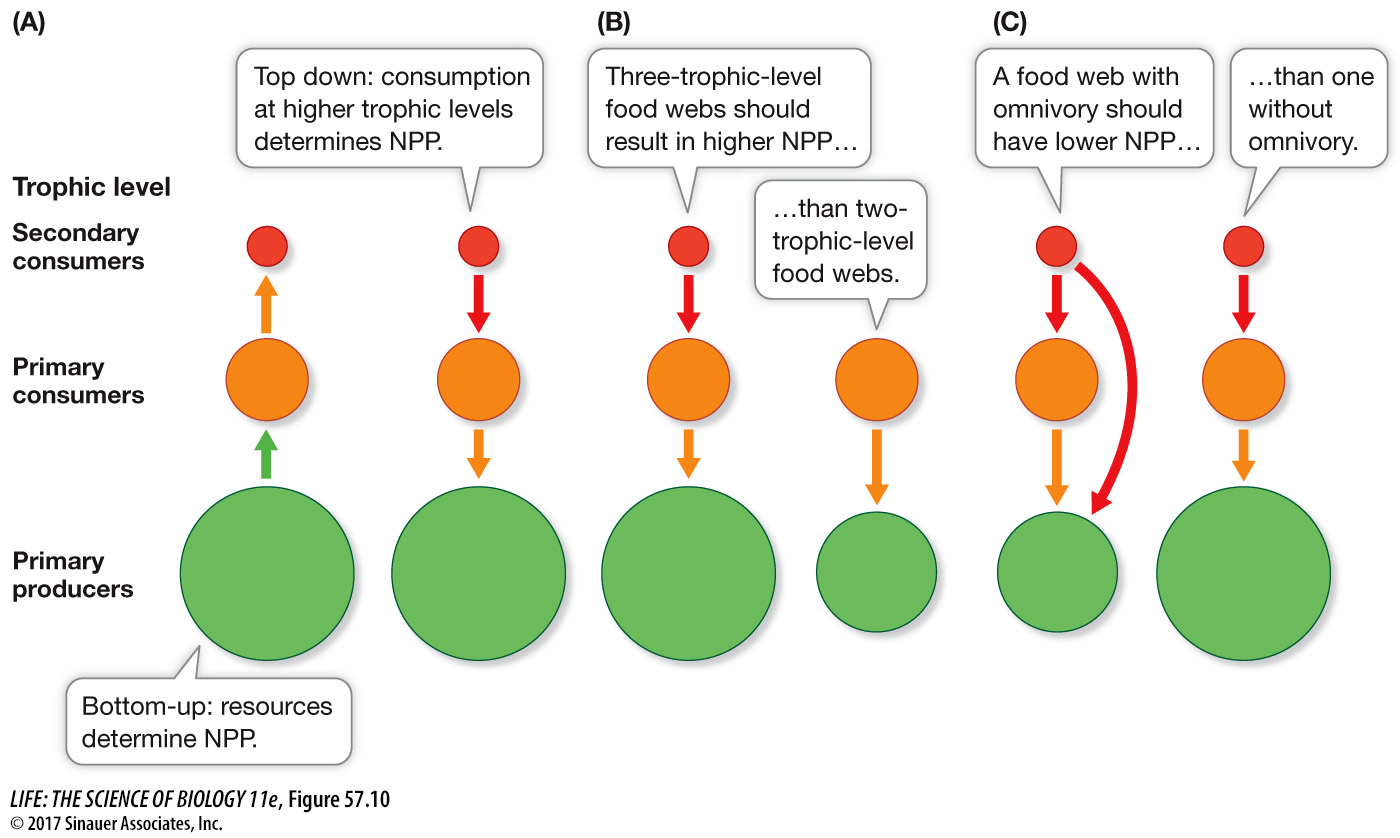Food webs are controlled by bottom-up and top-down forces
The control of energy flow in an ecosystem occurs in two ways. First, as discussed in Key Concept 57.2, the amount of energy entering a food web can depend on the NPP of that system, which depends on such factors as rainfall, temperature, light, and nutrients. The more NPP entering the system, the more energy that is passed up the food web to consumers. This flow of energy is referred to as “bottom-up” control because it comes from the “bottom,” or primary producer trophic level (Figure 57.10A). The other type of control on energy flow can come from consumers at higher trophic levels, who regulate the amount of NPP by feeding on lower trophic levels. This control is referred to as “top-down” control because it comes from the “top,” or the secondary consumer trophic level.

Figure 57.10 Bottom-up and Top-down Control of Food Webs (A) Production in an ecosystem can be viewed as mostly being controlled by limiting resources (bottom-up) or by consumers at higher trophic levels (top-down). (B) A three-level food web, in which the secondary consumer affects the primary consumer’s abundance, has higher NPP (represented by the size of the green circle) than a two- or four-level food web. (C) A three-level food web with omnivory has lower NPP than a food web without omnivory.
All food webs are controlled by both bottom-up and top-down pathways, but the relative importance of that control can vary depending on the food web in question. For example, food webs that experience a trophic cascade driven by a keystone predator, as you saw in the examples of wolves in Yellowstone National Park (see Figure 56.9) and sea otters in kelp forests, are dominated by top-down control (see Key Concept 56.3). In those two cases, it was the top predator that controlled the prevalence of primary producers (aspens and kelp, respectively), rather than limiting resources per se.
There are also clear examples of bottom-up control in food webs. For example, in a study of pelagic ecosystems off the coast of western North America, researchers found a strong positive correlation between phytoplankton abundance, zooplankton abundance, and fish production (measured from fisheries-catch data). Phytoplankton abundance in this region is largely controlled by ocean upwelling, which brings nutrients to the light-saturated surface waters for use by phytoplankton. The intensity of upwelling varies along the coast, thus creating “hot spots” of productivity that are reflected in the fish populations of the region.
